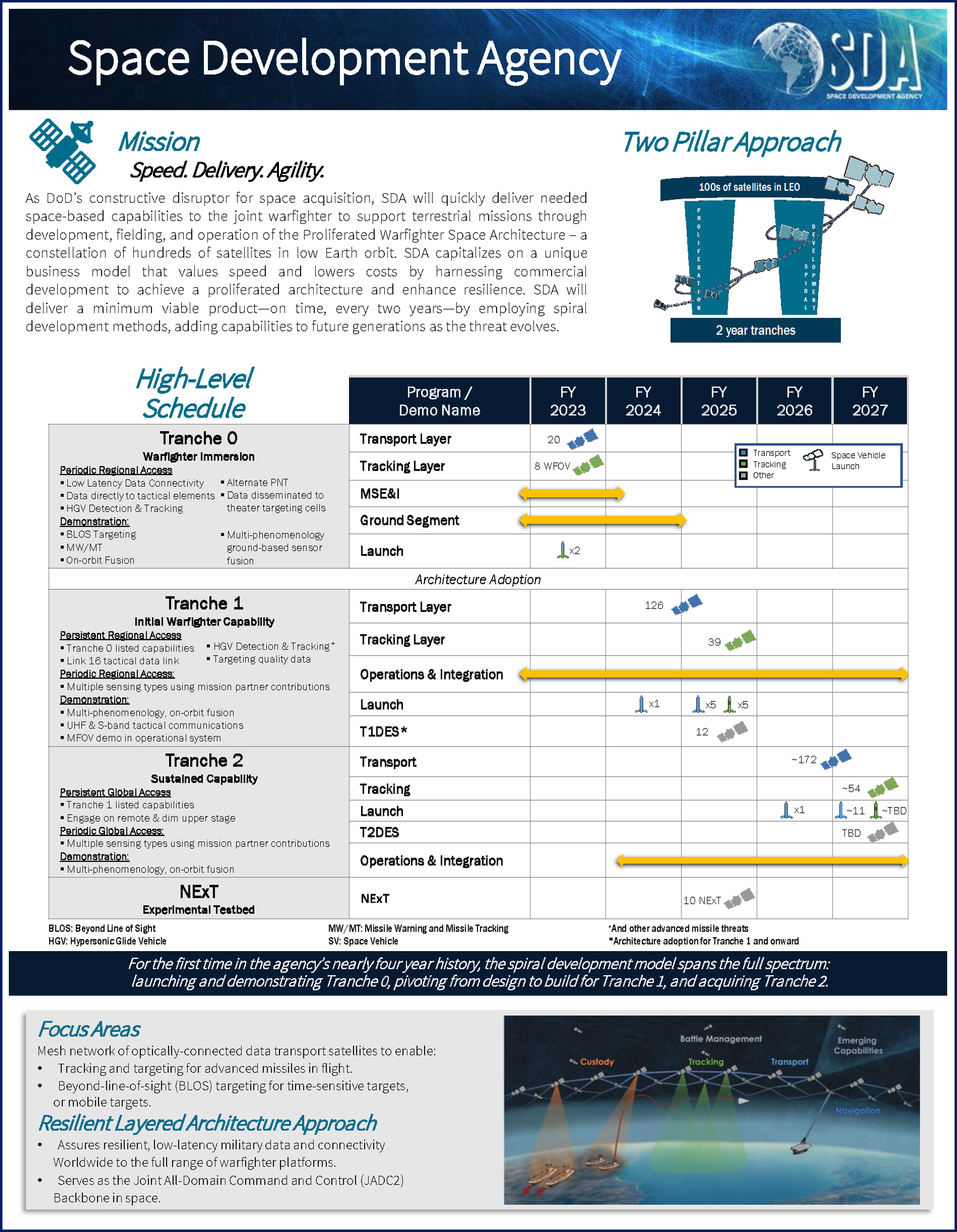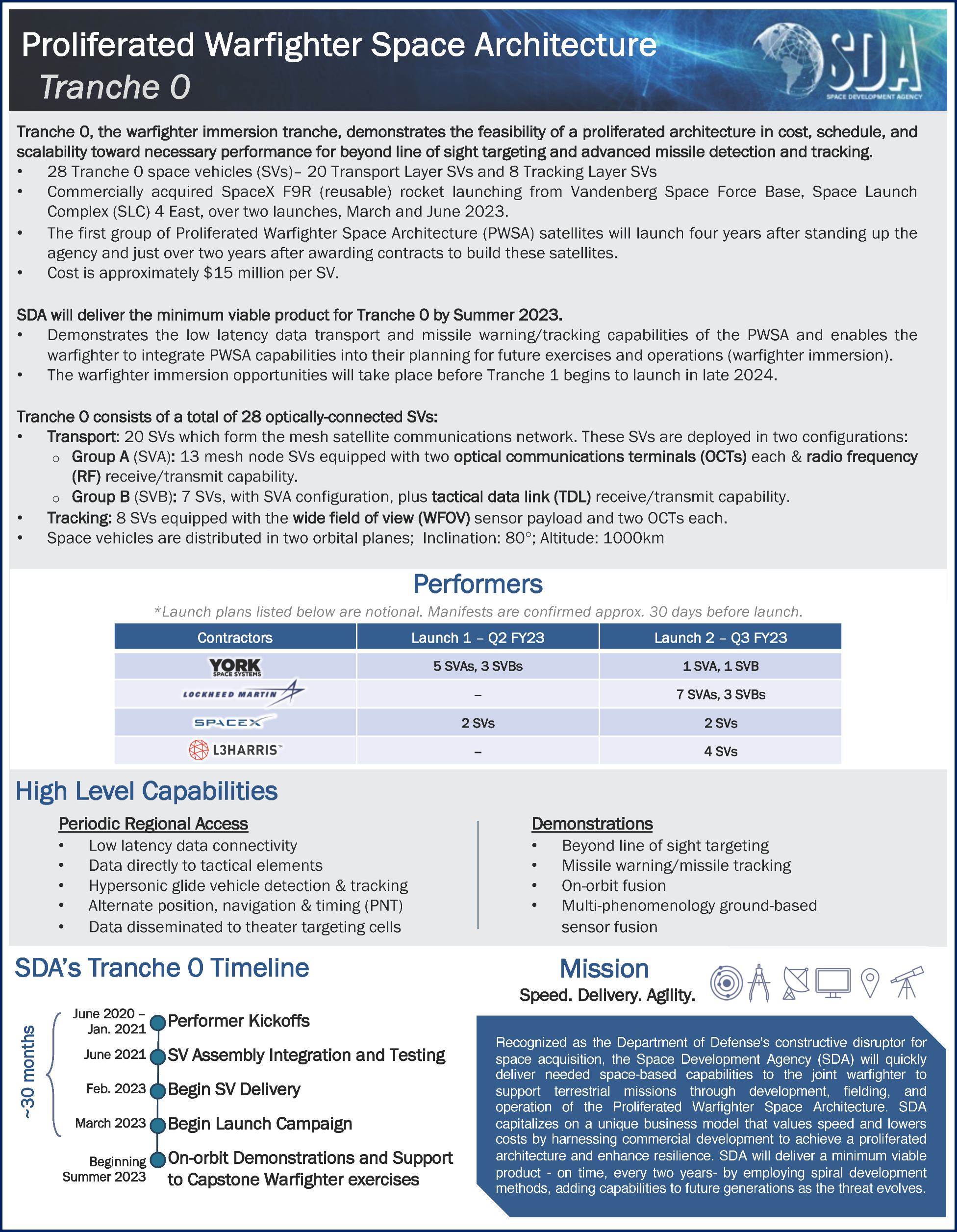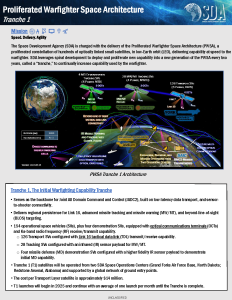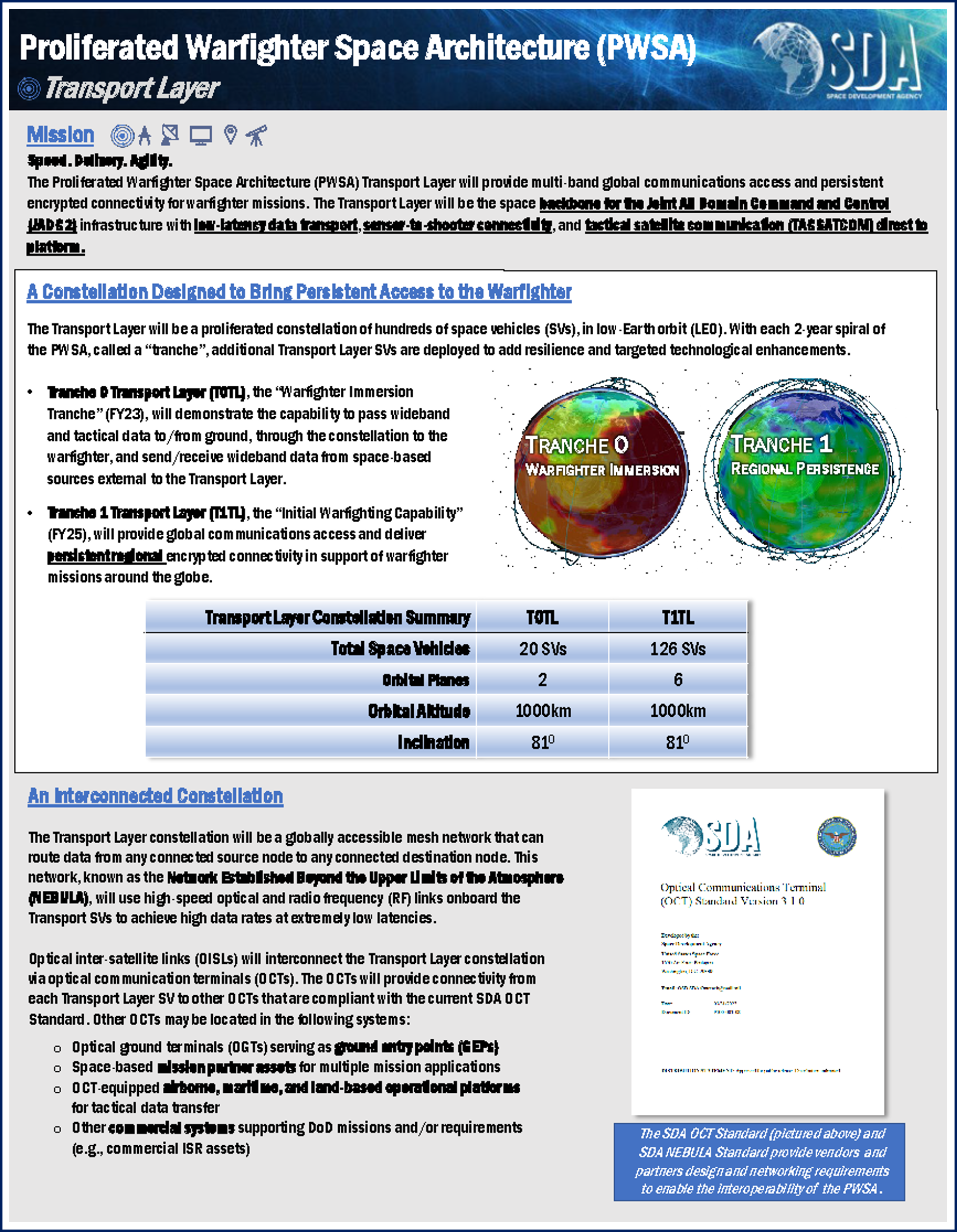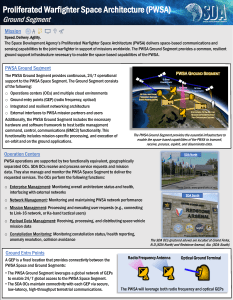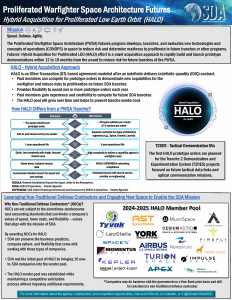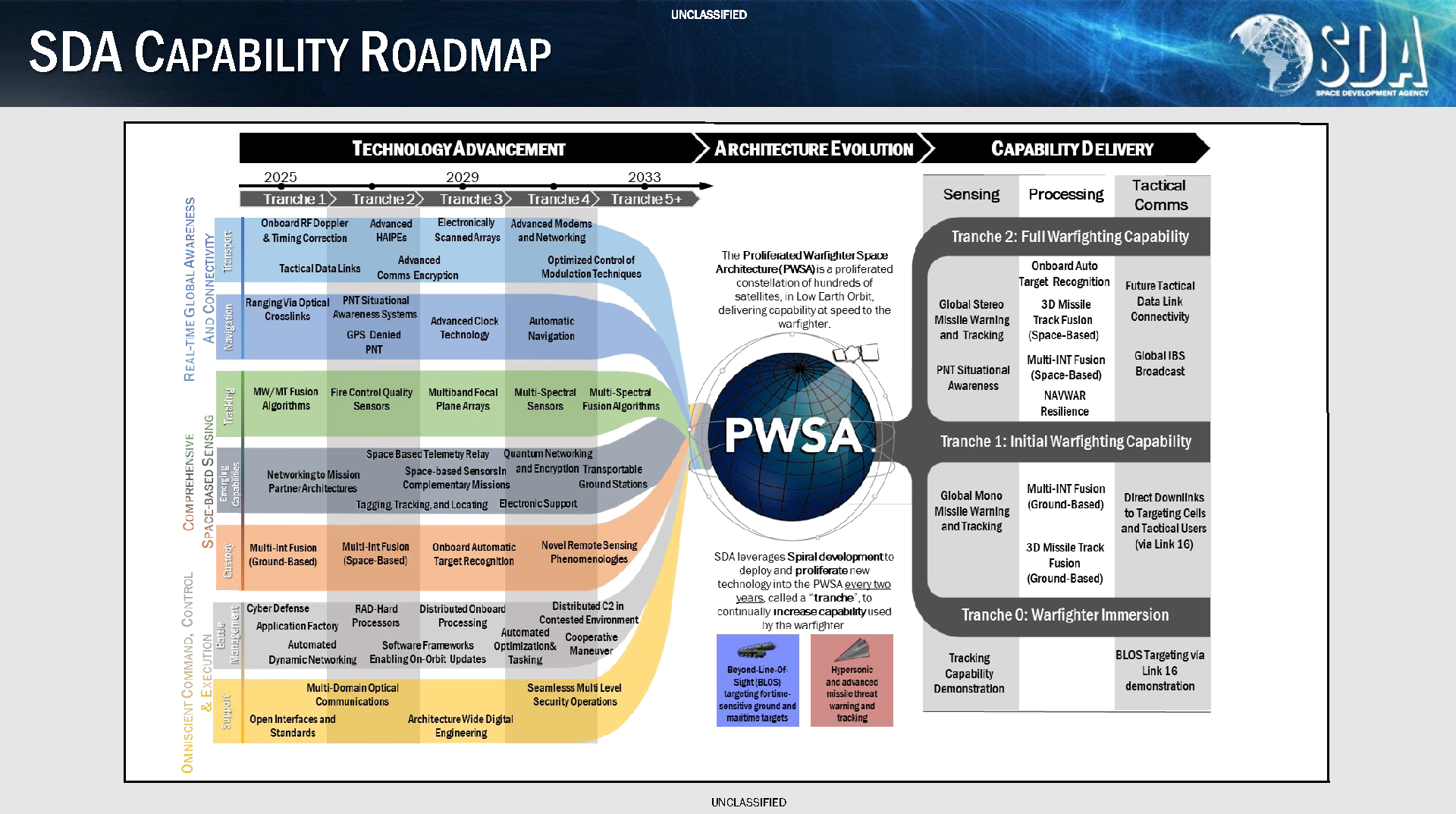FACT SHEETS
STANDARDS
Optical Communications Terminal (OCT) Standard Versions 3.2.0 & 4.0.0
The Space Development Agency (SDA) released an intermediate Optical Communication Terminal (OCT) standard between v3.1.0 and v4.0.0 to reduce risk in the Tranche 3 solicitations. OCT Standard v3.2.0 is being released alongside OCT Standard v4.0.0. OCT Standard v3.2.0 includes incremental updates from v3.1.0 and new requirements defined in v4.0.0 not specific to the burst-mode waveform implementation. SDA intends for v3.2.0 to be the standard of record for Tranche 3, with a smaller, select number of optical terminals compliant with v4.0.0.
Version 3.2.0 & 4.0.0 of the OCT standard are backward compatible with previous versions, ensure interoperability across vendors, enable a strong marketplace, and provide relevant communication capabilities to space, terrestrial, maritime, and airborne warfighting platforms. The SDA OCT standard defines top-level technical specifications for an optical communications terminal to be interoperable with the Proliferated Warfighter Space Architecture (PWSA), ultimately enabling partners and allies to move data across the SDA Transport Layer.
Emerging warfighter needs and technology advancements drive the spiral development of the OCT standard. SDA will continue to deliver capability to the warfighter in two-year spirals to address existing and emerging threats.
OCT Standard v4.0.0 introduces a new long-range waveform that looks toward future connection with the Space Systems Command Resilient Missile Warning/Missile Tracking medium Earth orbit (MEO) Missile Track Custody (MTC) space vehicles. This waveform will enable a resilient path for future MEO MTC satellites to move critical warfighter data through the PWSA Transport Layer.
Earlier versions of the OCT Standard may be found here.
SDA NEBULA Standard Version 3.05
The Proliferated Warfighter Space Architecture will transmit large amounts of data with low latency throughout the constellation and associated ground systems. Each satellite in the PWSA is equipped with Optical Communication Terminals (OCTs), addressed in the other standard on this page, and will be part of the same network. This document defines the standards and requirements for the PWSA network, known as the Network Established Beyond the Upper Limits of the Atmosphere (NEBULA).
In November 2024, SDA issued the updated NEBULA Standard v3.05. SDA suggests potential cryptographic device vendors take note of section 3.2, entitled “Information Assurance NEBULA_4”, where minimal requirements for acceptable PWSA-compatible high assurance internet protocol encryptor (HAIPE) devices are defined.

